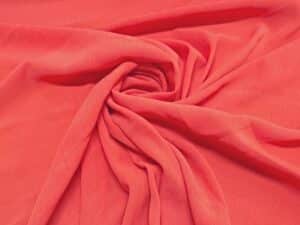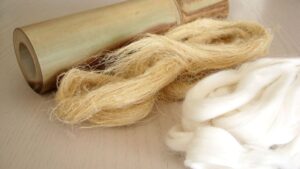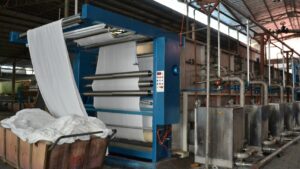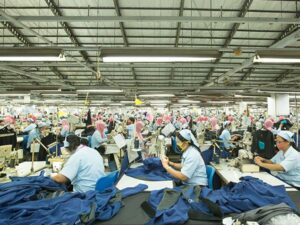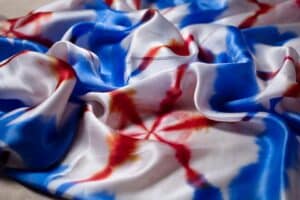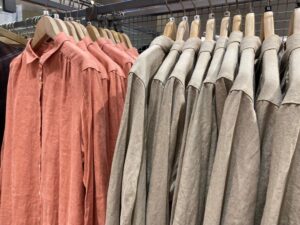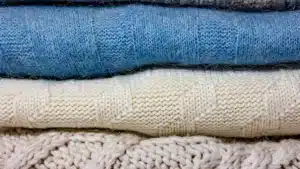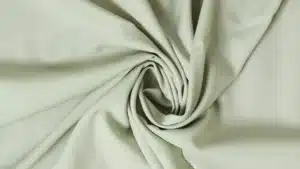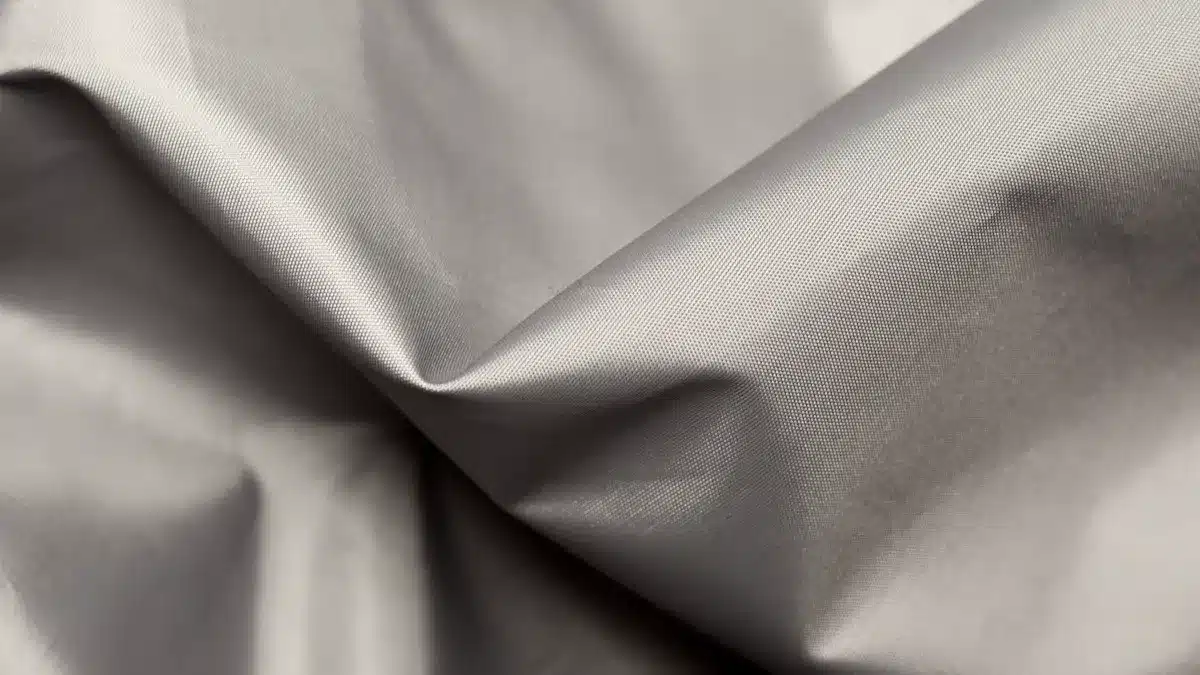
First of all, polyamide fabric is nylon fabric.
Polyamide fabric is man-made and made from special chemicals. It is strong and can change shape without breaking. This fabric stretches but goes back to its original shape. It pulls sweat away from your skin, keeping you dry. That’s why it’s great for sports clothes. Many industries use it because it works for many things, like clothes and tools. By 2033, the polyamide market might grow to $55.1 billion because it’s so useful and special.
Key Takeaways
Polyamide fabric, called nylon, is strong and stretchy. It keeps moisture away, so it’s great for sports activewear, outdoor apparel and fashion clothes.
This fabric lasts long and blocks UV rays. It protects you outside and stays in good shape longer than many other fabrics.
Eco-friendly choices are growing. Some companies make polyamide from plants like castor oil to help the environment.
Take care of polyamide by washing gently and air drying. Store it in a cool, dry place to keep it nice for a long time.
Buying recycled polyamide helps the planet by cutting waste. It’s a smart and responsible choice for shoppers.
What Is Polyamide Fabric?
Definition and Composition
Polyamide fabric, also called nylon, is man-made. It is made from long chains of special molecules. These molecules are formed through a process called polymerization. In this process, small parts called monomers join together. DuPont first created polyamide fabric in the 1930s. It was made as a strong replacement for silk. During World War II, it was used to make parachutes. Later, it became popular for everyday clothes.
The makeup of polyamide fibers depends on the type used. Nylon 6 and nylon 6,6 are two common kinds. Both come from petroleum. But now, scientists are making eco-friendly polyamides. They use renewable materials like castor oil. These new types aim to be better for the planet. They still keep the useful features of synthetic fabrics.
In Chinese, we call Polyamide as 聚酰胺(jù xiān àn) and call Nylon as 尼龙(ní lóng).
Key Characteristics of Polyamide Fabric
Polyamide fabric has many special features. It can stretch and return to its shape. This makes it great for sportswear and tight clothes. The fabric is light and lets air pass through. This keeps you cool and comfy when active. It also pulls sweat away from your skin, keeping you dry.
Another great feature is its toughness. Polyamide fabric doesn’t wear out easily. It’s perfect for backpacks and work gear. It also blocks UV rays and resists scratches. This makes it good for outdoor use. Plus, it’s easy to take care of. It dries fast, doesn’t stain much, and doesn’t need ironing. This makes it handy for daily use.

Polyamide fabrics, like nylon, stretch and keep you dry. They feel soft and move with you, giving a comfy fit.
How Is Polyamide Fabric Made?
Production Process Overview
Making polyamide fabric starts with creating its fibers. Factories use special chemicals called polyamide monomers from petroleum. One common monomer is hexamethylenediamine. It mixes with adipic acid in a process called polymerization. This reaction makes nylon 6,6, a type of polyamide. The result is a melted material shaped into fibers.
To form fibers, the melted material goes through a spinneret. A spinneret is a tool with tiny holes that shape the material into thin strands. These strands cool and harden as they come out. Workers then roll the fibers onto spools for the next steps. The fibers are stretched to make them stronger and more flexible. Finally, they are woven or knitted into fabric.
This process gives the fabric its strength, stretch, and durability.
Materials Used in Manufacturing
Polyamide fabrics are made from specific raw materials. The main ingredients are polyamide monomers like hexamethylenediamine and adipic acid. These come from petroleum, which is not renewable. Nylon 6,6 and nylon 6 are the most common types. They are popular because they are strong and flexible.
Recently, companies have started using eco-friendly materials. Some now use renewable resources like castor oil to make bio-based polyamides. These new options aim to lower the environmental harm of traditional production. Though still improving, they offer hope for a greener future.
Making polyamide fabric uses smart chemistry to create strong, useful materials.
Unique Properties of Polyamide Fabric
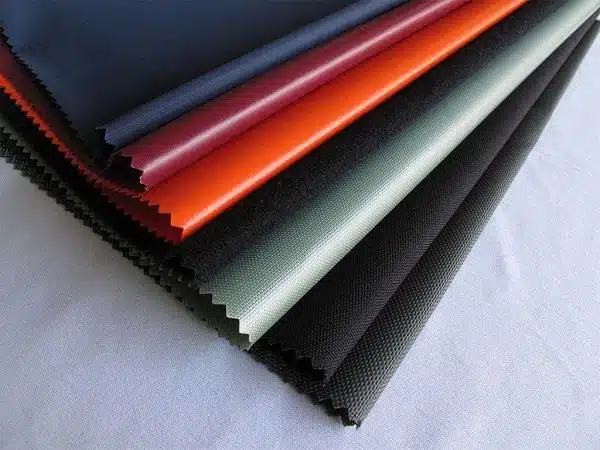
Durability and Strength
Polyamide fabric is very strong and lasts a long time. It can handle rough use, making it great for outdoor gear and tools. Tests show that types like PA11 and PA12 are very tough. For example:
PA11 is stronger than PA12 and can take more force.
It also stretches more before breaking, showing its flexibility.
Tests show PA11 stays strong even after repeated use, with a stress limit of 30 MPa.
These features make polyamide fabric a dependable choice for long-lasting products.
Stretchability and Comfort
Polyamide fabric stretches well and feels comfortable to wear. Its fibers stretch and return to shape without losing strength. This makes it ideal for sports clothes, leggings, and tight outfits. The fabric moves with your body, letting you move freely. Unlike other materials, it stays strong and doesn’t lose shape over time. This mix of stretch and durability gives lasting comfort.
Moisture-Wicking and Quick-Drying
Polyamide fabric keeps you dry by pulling sweat away from your skin. It also dries fast, making it great for active use. Tests like the Vertical Wicking Test check how fast sweat moves on the fabric's surface. The Drying Rate Test measures how quickly it dries after getting wet and returns to its original weight. These tests prove its ability to manage moisture well.
Athletes love how quickly it dries, keeping them comfy and preventing chafing. Whether exercising or outdoors, this fabric helps you stay fresh and dry.
Polyamide fabric’s ability to wick sweat and dry fast makes it perfect for sports and outdoor clothes.
UV Protection and Abrasion Resistance
Polyamide fabric blocks harmful UV rays, keeping your skin safe. This makes it great for outdoor clothes like swimsuits and sun hats. It helps protect you from too much sun while outside. You can enjoy hiking or swimming without worrying about sunburn.
Another great thing about polyamide is its toughness. It doesn’t tear or wear out easily, even with rough use. That’s why it’s used in backpacks, work clothes, and gear for tough jobs. It lasts a long time, saving money on replacements.
Experts agree that polyamide is great for UV protection and durability. Reports show it’s important for sports, defense, and work industries. The need for strong fabrics is making this market grow fast.
Tip: Want clothes or gear for outdoor fun? Pick polyamide fabric. It keeps you safe from the sun and stays strong.
Polyamide fabric is both protective and durable. Whether hiking, working, or relaxing outside, it keeps you comfy and lasts long.
Common Uses of Polyamide Fabric
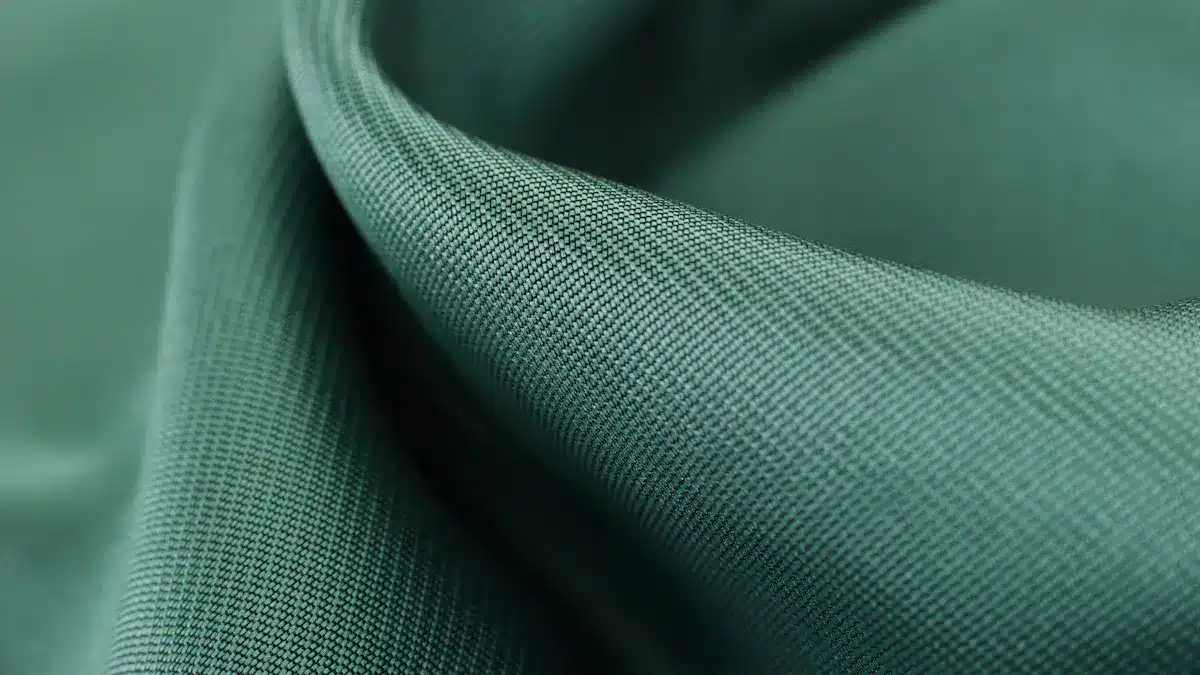
Everyday Clothing and Fashion
Polyamide fabric is important in making daily clothes. Its stretchiness and strength are great for tights, swimsuits, and underwear. It’s also used in comfy loungewear, stockings and casual outfits. The global market for polyamide is growing fast.

This fabric keeps you dry by pulling sweat away from your skin. It also doesn’t wrinkle easily, making it great for travel clothes. Whether at work or relaxing, polyamide fabric gives both comfort and style.
Sportswear and Outdoor Gear
Polyamide fabric is perfect for sports and outdoor clothes. It dries fast and keeps sweat off your skin, keeping you comfy. Athletes like it for yoga pants, sports bras, and running shorts. It stretches well, letting you move freely, and it’s tough enough for heavy use. It is expected to rise from $43.8 billion in 2023 to $55.7 billion by 2028. This shows how popular it is, especially for sports and activewear.

This fabric also can be waterproof and blocks harmful UV rays, protecting your skin outdoors. It’s great for hiking, swimming, or biking. The rising need for activewear shows how much people trust polyamide for strong, high-quality clothes and bags.

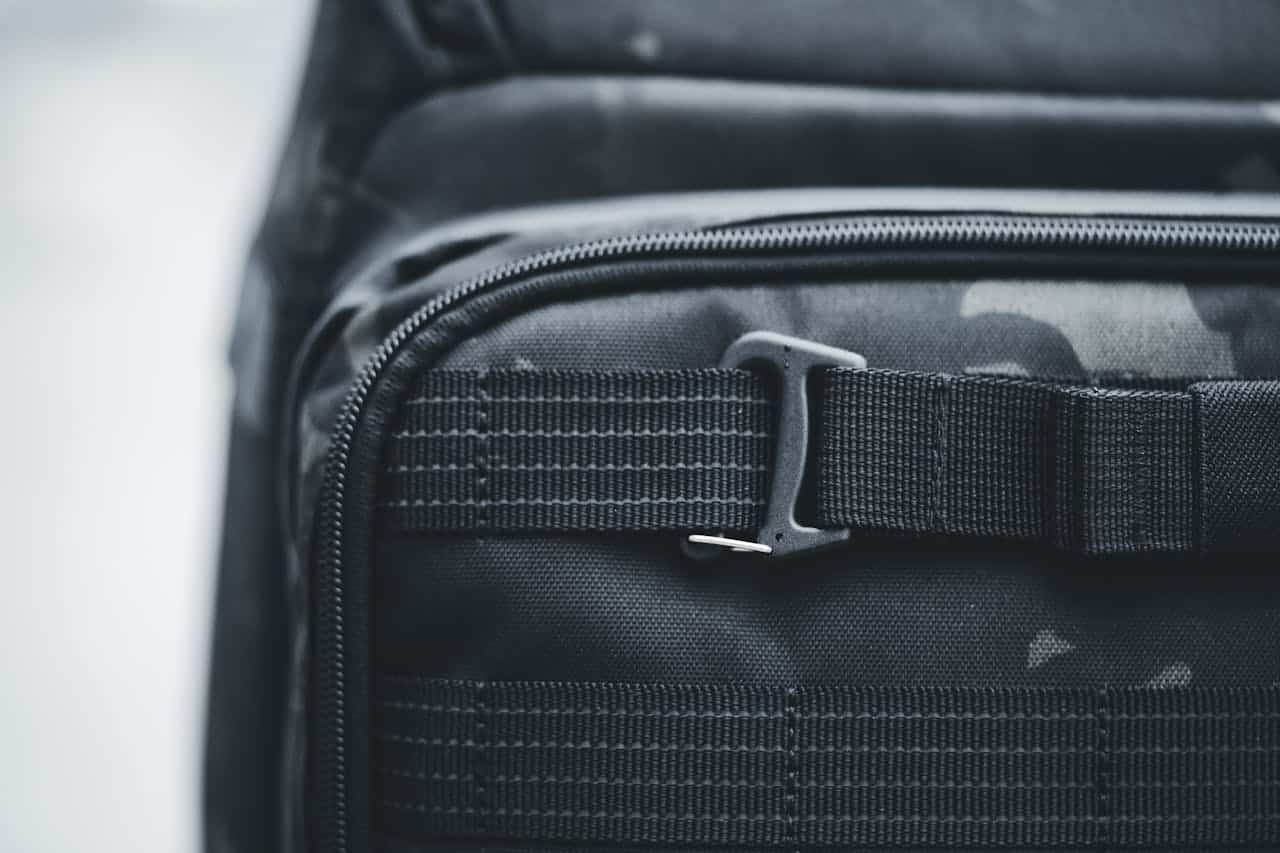
Industrial and Technical Applications
Polyamide fabric isn’t just for clothes; it’s used in industries too. It’s light but strong, making it good for hot air balloon, car and airplane parts. In food packaging, it keeps food fresh by blocking air and moisture.

In medicine, it’s used for bandages, surgical gowns, and stitches because it’s clean and flexible. It’s also found in conveyor belts and electrical insulation, where strength matters. Since it can be recycled, it helps industries stay eco-friendly.

Industry Segment | Applications |
|---|---|
Automotive | Used for making car parts and components. |
Textile | Great for outdoor clothing, sportswear and activewear due to its stretch and strength. |
Packaging | Keeps food fresh with its air and moisture-blocking abilities. |
Medical | Used in medical tools like stitches and surgical gowns. |
Polyamide fabric is useful in many areas, from daily life to special industries.
Environmental Impact of Polyamide Fabric
Sustainability Challenges
Making polyamide fabric has some environmental problems. One big issue is circularity. Many polyamide items can’t be recycled or reused, causing more waste in fashion. Another problem is the use of plastics. Polyamide is made from petroleum-based plastics, which often end up in landfills or nature instead of being recycled.
Challenge | Description |
|---|---|
Circularity | Focus on making products that can be recycled or reused to cut down waste. |
Plastics in polyamide production create waste that often isn’t recycled and harms the environment. |
To solve these problems, better practices are needed. For example, green chemistry can remove harmful chemicals during production. Using closed-loop water systems saves water and stops pollution during dyeing. Also, recycled materials can lower the environmental impact of polyamide.
Practice | Description |
|---|---|
Green Chemistry | Removes harmful chemicals in production to make it eco-friendly. |
Water Conservation | Closed-loop systems save water and reduce pollution during dyeing. |
Sustainable Sourcing | Using recycled or responsibly sourced materials lowers environmental harm. |
Recycling and Reusability
Polyamide fabric can be recycled and reused. Recycling polyamide helps make new items, saving resources and cutting waste. For example, recycled polyamide is used in sportswear, carpets, and industrial goods. This extends the material’s life and supports eco-friendly efforts.

Polyamide can be recycled, reducing waste and helping the planet.
Recycled polyamide is used to make new items, supporting sustainability.
Choosing recycled polyamide products reduces the need for new materials and helps the environment.
Comparison with Other Synthetic Fabrics
Compared to other fabrics, polyamide has unique features. It stretches well, lasts long, and wicks moisture, making it great for activewear. But it doesn’t breathe as well as natural fibers like wool. Also, its production impacts the environment more because it uses petroleum-based materials.
Feature | Other Synthetic Fibers | Natural Fibers (Silk, Wool) | |
|---|---|---|---|
Elasticity | High | Varies | Moderate |
Moisture-wicking | Yes | Yes | Yes |
Durability | High | Varies | Moderate |
Breathability | Low | Varies | High |
Environmental Impact | High | Varies | Low |
Polyamide resists mold and mildew, unlike natural fibers. It also keeps you warm in cold weather, making it good for winter clothes. While it’s strong and useful, reducing its environmental impact is still important.
Tip: Choose recycled polyamide products to enjoy its benefits and help the planet.
Caring for Polyamide Fabric
Washing and Drying Guidelines
To care for polyamide fabric, wash it the right way. Always read the care label on your clothes. Most items can go in the washer, but delicate ones need handwashing. Use mild soap and soak for 30 minutes. Rinse well to remove all soap.
If using a washer, put clothes in a mesh bag. This keeps the fabric safe from damage. Choose a gentle cycle with cold or warm water. After washing, air drying is best. Lay the clothes flat or hang them in shade. Avoid dryers, as heat can harm the fabric.
Tip: Air drying keeps the fabric strong and saves energy.
Stain Removal Tips
Polyamide fabric doesn’t stain easily, but spills happen. For small stains, mix warm water, dish soap, and vinegar. Dab the stain gently with a clean cloth. Don’t rub, as it can push the stain deeper.
For tough stains, use a stain remover or vinegar mix. Focus on areas like collars and cuffs. Handwash delicate items, but machine wash stronger ones. Always use a mesh bag to protect the fabric. After cleaning, air dry to keep its shape.
Note: Test stain removers on a hidden spot first to avoid damage.
Proper Storage Techniques
Store polyamide fabric properly to make it last. Fold clothes neatly to avoid wrinkles. Make sure swimsuits and activewear are dry before storing. Wet clothes can cause bad smells or mildew.
Keep clothes in a cool, dry place away from sunlight. Too much sun can weaken the fabric. For long-term storage, use fabric bags instead of plastic ones. This stops moisture and keeps clothes fresh.
Tip: Rotate your clothes often to avoid wearing out the same items.
Taking care of polyamide fabric is easy. Wash, remove stains, and store it properly to keep it looking great for years.
Making polyamide in eco-friendly ways is becoming popular. Bio-based polyamides, made from plants like castor oil, help lower pollution. Companies working on these ideas are helping the planet. Choosing polyamide fabric means picking a useful material that’s also better for the environment.
FAQ
How is polyamide fabric different from other synthetic fabrics?
Polyamide fabric is strong, stretchy, and wicks sweat well. It lasts longer than many other synthetic fabrics. Its stretchiness makes it great for sports and outdoor clothes.
Can polyamide fabric be reused?
Yes, polyamide fabric can be reused. Recycled polyamide is made into new items like rugs and sports clothes. Using recycled polyamide helps cut waste and protect the planet.
Is polyamide fabric okay for sensitive skin?
Polyamide fabric is usually fine for sensitive skin. Its smooth surface helps avoid irritation. But if you’re allergic to synthetic fabrics, try it first before wearing it for long.
How does polyamide fabric deal with sweat?
Polyamide fabric pulls sweat off your skin to keep you dry. It also dries fast after washing or sweating, making it great for activewear.


